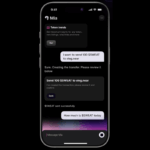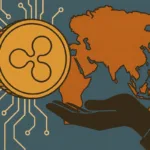The internet is a constantly developing space. Multiple iterations have evolved it from a static read-only domain to a free, interactive platform where users can share data, money, and other valuable resources.
The main key to decoding Web3 is to understand how data is disseminated in each version of the internet. That means to include the wider Web 3.0 and look at the critical leaps between Web 1.0 to Web 2.0 to Web 3.0. It is also important to understand that Web3 and Web 3.0 are completely different, something to be explained in the next section.
What is the difference between Web3 and Web 3.0?
Web3 specifically refers to decentralized finance and payment systems powered by the blockchain. Web 3.0 is the new wave of the internet that operates on semantic technology, AI, and an improved way of sharing information and data between platforms.
Newsletter
Get weekly updates on the newest crypto stories, case studies and tips right in your mailbox.
Tracking the development of web technology gives an idea of where web3 stands in this wave of innovation.
Web 1.0: Read-only static pages
The first version of the internet was limited to HTML pages that gave out information on a one-way basis. Users could only read from these pages, but there was effectively no two-way interaction. Many tech giants—Apple, Amazon, Microsoft, and IBM being a few —rushed in to establish their domains in this space. This version of the internet was largely popular in the 90s and early 2000s
Web 2.0: Dynamic HTML with interactivity
The second iteration was best amplified in the late 2000s, and it still runs today as the major, accepted form of the internet. Users can interact with their favourite platform or website through various features. Websites have more freedom and can put out videos, music, and pictures alongside text. The majority of the data and information exchange is controlled by entities who capitalized on this space early on, such as Google, Facebook, and X.
Web 3.0: A seamless and interactive web domain
This new version of the internet remains yet to be adopted on a wider basis, but the concept of this innovation is clear. Web 3.0 aims to have improved data exchange technology and allow for easier interactions not only between users and websites but also between users themselves and websites. Web3—the decentralized finance portion of this innovation—is focused on making better payment systems and applications based on the blockchain. Web3 can be defined as a part of Web 3.0 that has the same vision but stems from a different technology.
The timeline of Web3
Web3’s roots go back to the creation of the Bitcoin blockchain and its main BTC currency in 2009. This was the beginning of introducing decentralized payment systems to the public—when cryptography came into full use in developing a new way to make payments without a strong intermediary.
The emergence of web3 can be traced to 2015, when Ethereum launched, creating an open blockchain where developers could create their own decentralized app, leveraging all the benefits of blockchain technology.
Key issues associated with Web3
This technology has a few characteristics that mark it differently from Web 3.0. Open and free communication remains a huge part of Web3. Autonomy over personal data is another.
But Web3 remains limited and not easy to scale. This can be attributed to lack of awareness, incomplete information and expertise, and the existing web 2.0 still dominating the internet.
Implications of Web3
A common complaint of customers who deal with conventional financial institutions is that their money and financial transaction data is in the hands of a few major banks who control most of the market. Web3 claims to change all that with a system developed on the blockchain that provides improved freedoms over data and transaction history. User information is encrypted, providing a layer of security for individual transaction activity.
Developers interested in creating their own applications or payment technologies on Web3 have multiple blockchains to turn to. Ethereum and Solana are two of the biggest blockchain platforms with tradeable cryptocurrencies on the market as well.
Simply put, Web3 allows users and developers to benefit from a subset of an evolved internet that offers better freedom and autonomy.










